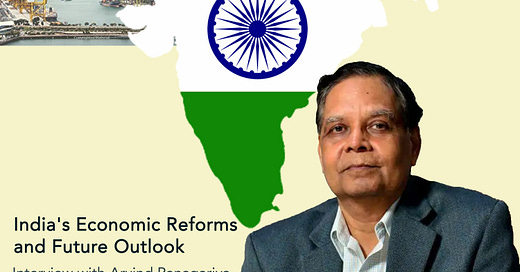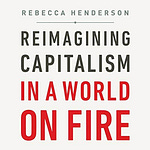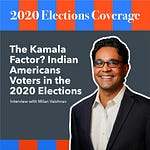Arvind Panagariya is Jagdish N. Bhagwati Professor of Indian Political Economy at Columbia University and the former and first Vice Chairman of the National Institution for Transforming India (NITI Aayog). Previously, he was the Chief Economist of the Asian Development Bank. In this interview recorded in the spring of 2019, Prof. Panagariya discusses India’s economic reforms and future outlook. As he explains, India and China’s per-capita income really diverged starting in the 1980s as China embarked on more ambitious economic liberation plans ahead of India. The quasi-autarky regime in India scuttled foreign trade and was anti-growth by construction. Growth was important in India's economic policy agenda because one can do little without it. Redistribution wouldn’t have worked because if the state redistributed, everyone would’ve been below the poverty line. There was nothing to redistribute, and nothing to "trickle down" either. Growth was the priority. In 1991, the economic reforms that India needed finally happened. Financial and trade liberalization truly happened, and with the over 7% GDP growth rate in recent years, India will likely become the world's 3rd largest economy in 7-8 years, surpassing Germany and Japan. However, because India’s growth trajectory is quite different from those other countries, its challenges are also different. India's economy is still heavily dominated by the agricultural sector, which only grows around 4% in a good year. The transition from agriculture to industry and services has been really slow for the Indian people, and the manufacturing sector has hardly pulled anyone in. The social revolution happened before labor revolution in India, so the system is employee friendly but not employer friendly. Not only do companies have very expensive acquisition cost, there is also very high cost for public projects (often land could make up to 3/4 of the overall cost). That’s why Prof. Panagariya proposes coastal special economic zones as a helpful solution, like China's Shenzhen model. By utilizing the ports and giving these regions the flexibility and freedom to write their own labor laws, these zones could potentially further spur economic growth for the country. This interview with Prof. Panagariya was recorded over two separate sittings. Tiger was so fascinated by India after the interview such that six months later, he went on a three-week long yoga & meditation trip to India with Princeton’s Office of Religious Life. We will soon release some of Tiger's additional interviews conducted in India – with Hindu monks and environmental businesspeople - and we hope that you may also treat this interview with Prof. Panagariya as a gateway to learn more about India.
1×
0:00
Current time: 0:00 / Total time: -2:14:04
-2:14:04
India's Economic Reforms and Future Outlook: Free Trade, Job Creation & Transition From Agriculture
Sep 20, 2020














Share this post